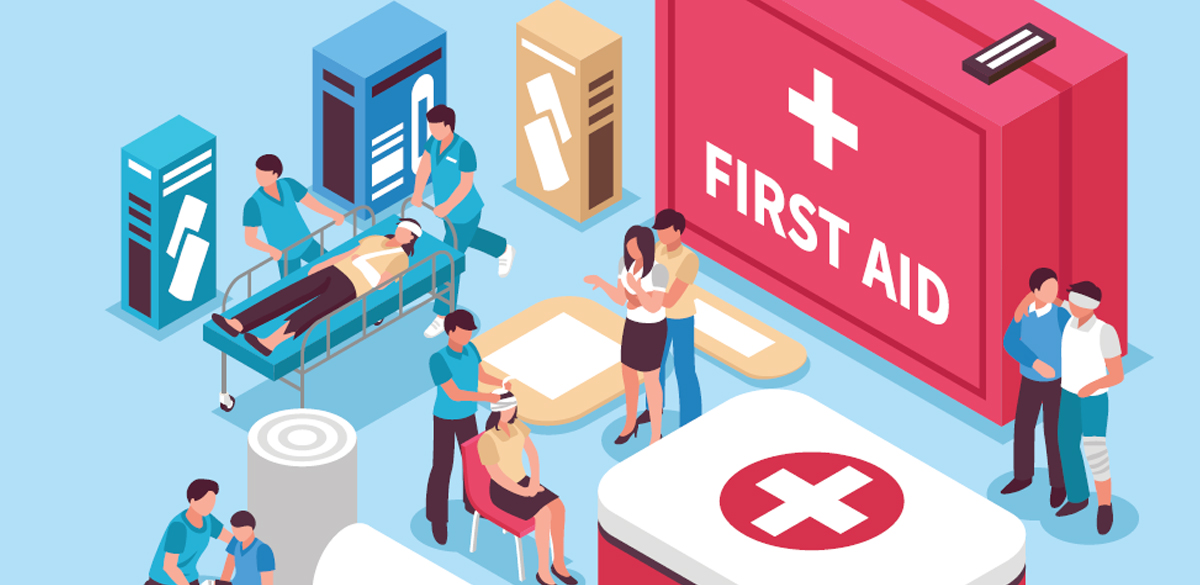How to Learn First Aid – Emergencies can happen at any time and in any place. Whether you’re at home, work, or out in public, being prepared to respond effectively in a crisis can make a life-or-death difference. Learning first aid is not just a valuable skill; it’s a responsibility we all share to ensure the safety and well-being of ourselves, our loved ones, and those around us.
What is First Aid?
First aid refers to the immediate assistance or care provided to a person who has been injured or suddenly taken ill before professional medical help arrives. The primary objectives of first aid are to preserve life, prevent the condition from worsening, and promote recovery. First aid techniques can be applied to a wide range of situations, from minor cuts and bruises to more severe injuries and medical emergencies.
Why Learn First Aid?
- Immediate Response: In many emergencies, the first few minutes are crucial. Knowing how to provide prompt and appropriate first aid can prevent a situation from deteriorating.
- Save Lives: First aid knowledge empowers individuals to take life-saving actions. Whether it’s performing CPR (cardiopulmonary resuscitation) or stopping severe bleeding, your actions can make a difference.
- Reduce Suffering: Also First aid not only saves lives but also reduces pain and suffering for the injured or ill person. Offering comfort and care can greatly alleviate distress.
- Community Safety: Learning first aid contributes to safer communities. If more people are traine in first aid, the overall preparedness and ability to respond to emergencies increase.
- Workplace Requirement: In many workplaces, having employees trained in first aid is a legal requirement. It ensures the safety of employees and visitors.
- Travel and Outdoor Activities: If you enjoy outdoor adventures, traveling, or participating in sports, knowing first aid can be invaluable when medical help is not readily available.
What You Can Learn in a First Aid Course
First aid courses are typically design to teach individuals a wide range of skills and knowledge, including:
- CPR: Cardiovascular emergencies often require immediate action. CPR is a life-saving technique that involves chest compressions and rescue breaths for someone in cardiac arrest.
- Choking: How to help someone who is choking by performing the Heimlich maneuver or abdominal thrusts.
- Bleeding Control: Also Techniques to stop severe bleeding using direct pressure, tourniquets, or pressure dressings to answer How to Learn First Aid .
- Burns: How to provide first aid for burns, including assessing the severity and administering appropriate care.
- Fractures and Sprains: Splinting and immobilization techniques for broken bones and sprained joints.
- Shock: Recognizing the signs of shock and providing comfort and care to someone experiencing it.
- Allergic Reactions: Administering epinephrine (EpiPen) for severe allergic reactions (anaphylaxis).
- Seizures: How to assist someone during a seizure and ensure their safety.
How to Learn First Aid
There are several avenues for learning first aid:
- Certified Courses: Organizations like the American Red Cross, St. John Ambulance, and the American Heart Association offer certified first aid courses. These courses provide hands-on training and certification upon completion.
- Online Courses: Some organizations offer online first aid courses with video demonstrations and quizzes. While these can be informative, hands-on practice is often recommend.
- Local Workshops: Check with your local community centers, hospitals, or fire departments for information on local first aid workshops.
- Mobile Apps: There are also mobile apps available that provide guidance and instructions for various first aid situations. These can serve as handy references in emergencies.
First Aid Course link
Learning first aid is not just a skill; it’s an act of kindness and responsibility towards your fellow humans. By equipping yourself with the knowledge and confidence to respond in emergencies, you can make a significant impact during critical moments. Remember, in an emergency, your actions can be the difference between life and death. So, take the initiative to learn first aid—it’s an investment in safety, well-being, and the potential to save lives and if you want to start study Learn First Aid Click here.
